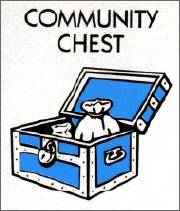It’s taken me a lot longer than I planned to put this post together. I hope you find that it was worth the extra time for me to tie some things together.
It was a sunny late summer morning when I was having a bagel and coffee on the sidewalk outside Einstein Brothers in Westminster. I was talking to Michael, a pastor and friend of mine at The Journey, about the “rule of 150” from chapter 5 in The Tipping Point (Gladwell, Malcolm. The Tipping Point. New York: Little, Brown, and Company, 2000). We were trying to get a handle on the reality of that rule and what, if anything, it means in the dynamics of a church.
The underlying question seemed to be about making sense of the organizational ebb and flow of the community. It seemed that any time we saw significant “new blood” there was a corresponding loss of “old blood”. The church, has plateaued with regular attendance in the core service right around 150. The church has met in rented rooms at the local community college for the past 8 or so years. The capacity of the main meeting room is about 180. During peak vacation weeks, it’s closer to 120 and on the big family holiday Sundays, it’s more like 170.
Michael and I have both read the literature on church growth and we are familiar with the typical organizational plateaus that happen at certain thresholds. We understand the types of mitigation that many churches have taken over the time (add staff, get larger space, institute additional meeting times, initiate a building campaign, etc.). We’ve seen very artificial techniques used to leap past tough gaps (150, 300, 600, 1000 are all biggies).
The Journey has always tried to be more of an organic community. It’s never advertised in the papers, knocked doors in the neighborhood, etc. It’s always been about people connecting with each other, reinforcing one another spiritually and together reaching out to those in need — both within and beyond the community. As people were touched in one way or another, sometimes they would choose to join in and the church would see growth.
By now you may be asking “what’s all this got do to with collaboration”? Well, I’ll tell you. If you consider that a church with a stated mission run by committed, self-selecting individuals can have trouble sustaining community, how much more difficult is it in the business world where the emotional attachments may not be as great.
In my years as a management consultant in the Knowledge Management and Collaboration space (nearly a decade now), we have often talked about the fact that it’s not the explicit (written down) information that needs the most help. The real knowledge management problem is in finding the tacit information, the stuff that’s bound up in the experiences of people. The challenge has always been in trying to connect seekers with “knowers” and building up social capital. Cohen and Prusak said:
“Social capital consists of the stock of active connections among people: the trust, mutual understanding, and shared values and behaviors that bind the members of human networks and communities and make cooperative action possible.” Cohen, Don, and Prusak Laurence. In Good Company. Boston: Harvard Business School Press, 2001.
They recognized the inherent challenge of making visible the invisible. If you could find enough people who cared enough about the same issues, you could have a community. People with shared values, a strong sense of reciprocity, and trust would be able to help navigate the unseen. Ideally, the community becomes somewhat organic in that the community knows stuff. The community knows more than any of the members and all are enriched by it.
What I told Michael is you need to find a way to make incidents of community more visible. It’s not enough to say “we are community” and “we need community” and “isn’t community great.” The very notion of community breaks out of the 3 hours per week you rent the college space. To the extent the stories of community are invisible and tacit and unknown, the fabric of community is threadbear.
I think that’s one of Gladwell’s points on the number of connections humans need to keep track of (p. 178-9) “if you belong to a group of twenty people, however, there are now 190 two-way relationships to keep track of: 19 involving yourself and 171 involving the rest of the group.” So the more the community acts outside of vision of each other, the more difficult it is to make the tacit explicit. The community’s actions are invisible. No one person can know what everyone else does. Eventually the cost of communicating to everyone who ought to know drains the energy and the organism will seek a more sustainable size, say 150. That was the gist of our discussion.
Since that discussion, I’ve had the pleasure of reading Tribes (Godin, Seth. Tribes. New York: Portfolio, 2008). Until that read, I had no idea that my thoughts had been so eloquently written. Let me sum up my thoughts for this entry with a brief quote from Godin p138:
“People don’t believe what you tell them.
They rarely believe what you show them.
They often believe what their friends tell them.
They always believe what they tell themselves.
What leaders do: they give people stories they can tell themselves. Stories about the future and about change.”
What are you doing to make your community visible? Can the invisible community collaborate? Please, tell me what you think.
